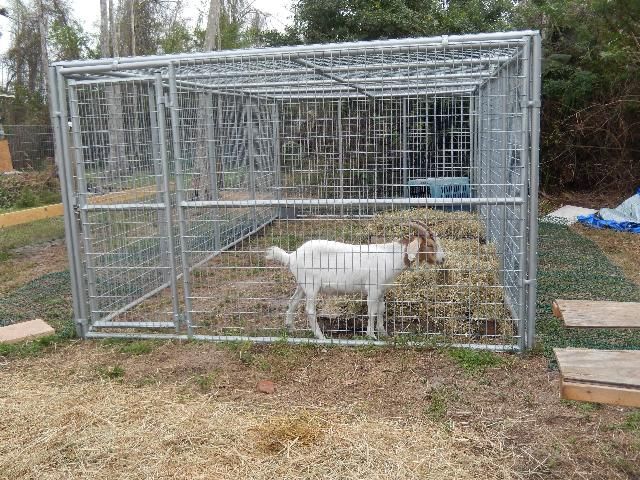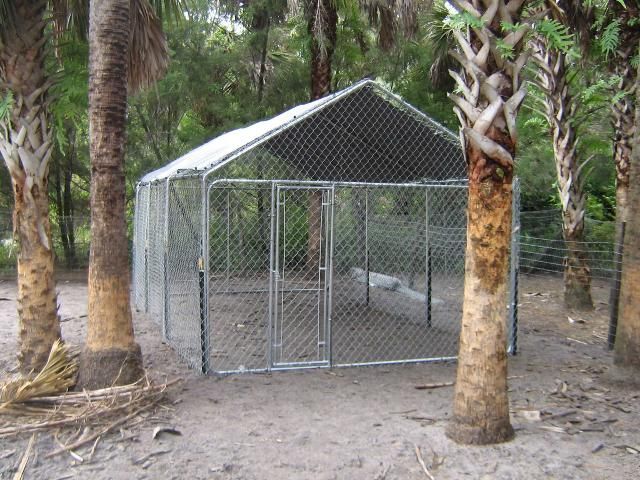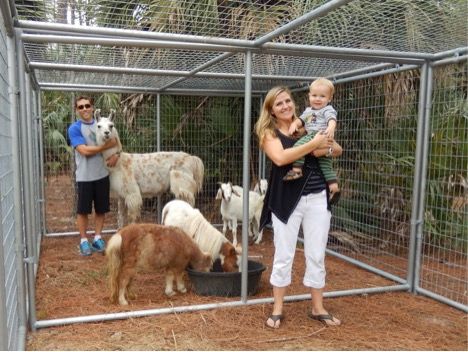Protecting Domestic Animals Protects Panthers
Panthers typically prey on white-tailed deer, raccoons, opossums, and feral hogs. Panthers have also been known to prey on domestic animals (e.g., pets and livestock) on cattle ranches and in residential areas in southwest Florida. These incidences are referred to as depredations. When depredations occur, some people believe panther populations have grown too large or are not well-managed. In fact, panthers are mostly restricted to southwest Florida and are listed as an endangered species. To maintain support for panther conservation, it is paramount that rural residents protect and secure their pets and livestock.
When panthers prey on livestock or pets, owners are negatively affected because they lose domestic animals. Panthers that opportunistically prey on domestic animals may develop a preference for hunting domestic animals that are easy to catch and kill, rather than their more difficult to hunt, native prey. If panthers killing livestock and pets becomes a pattern of behavior, ongoing efforts to conserve our panthers could be threatened by people's ensuing anger and fear of panthers.
Depredation in exurban areas is often the result of domestic animals being left outdoors, overnight, with inadequate protection from predators (including panthers, bobcats, and coyotes). Florida panthers are crepuscular, meaning they hunt and feed primarily at dawn and dusk. Fortunately, there are ways to prevent or greatly reduce the likelihood of domestic animal depredations, including:
- Installing predator-resistant enclosures
- Securing garbage
- Installing motion-sensor lighting
- Removing uneaten pet food
- Clearing tall, thick vegetation around the house

Credit: Lisa Ostberg
Predator-Resistant Enclosure
One of the most effective strategies for preventing depredation is building a predator-resistant enclosure, referred to as a "panther-proof" pen. This type of pen will protect domestic animals against multiple predators, including the panther. When it comes to building a panther-proof pen, there are options for which types of materials to use.

Credit: Mark Lotz
Choosing the Right Materials
Wood or metal poles are preferable materials for constructing the frame of the enclosure, while chain-link fencing is suitable for the sides, top cover, and floor. Because the pen will be exposed to rain, heat, and inclement weather, you should use stainless steel or treated lumber that will last for several years. While these materials may be more expensive than other materials, the cost over time of replacing rusted or rotted sections of the pen will likely exceed the initial costs of using stainless steel or treated lumber. The materials you need can be purchased at any building supply and hardware store.
Build from the Bottom Up
It is important to design your pen from the bottom to the top as a total enclosure to provide maximum protection. Steel or wooden posts must be anchored into the ground to stabilize the pen. Fencing must also cover the top of the pen so that predators are not able to access the pen from the top. If animals will be kept inside the pen during the day, install a tarp or solid roof to provide shade.
Give some thought to the gate/locking mechanism of the enclosure to ensure that the gate cannot be opened by accident or by a curious predator.

Credit: Lisa Ostberg
Use It Every Day
Once the enclosure has been completed, the most important step in protecting domestic animals is to use the pen. Panthers are opportunistic hunters and will take advantage of easy prey, such as unsecured domestic animals, even if they are only unsecured one night. However, if the pen is used each day, from early evening until the following morning, the odds of depredation are greatly reduced.
Other Actions to Minimize Unwanted Human-Panther Interactions
To further deter panthers from your property, clear tall, thick vegetation away from your home, use motion-sensor lighting at night, secure your garbage, and remove uneaten pet food each evening.
Predators use dense vegetation for hiding and stalking prey. By removing this vegetation from around your house, you make it less likely that predators will approach the house to prey on domestic animals. Nocturnal predators avoid light, and motion-sensor lighting may help deter them from approaching your house and animals at night. Unsecured garbage and pet food may attract panther prey (e.g., raccoons), thereby attracting panthers and other predators. Click here for more strategies to reduce unwanted interactions with panthers.
The Florida Panther
Florida panthers (Puma concolor coryi) once ranged throughout most of the southeastern United States. However, loss of habitat and efforts to eradicate panthers during the 1800s led to a large decline throughout much of their historic range. Florida panthers were listed as an endangered species in 1967, and have been federally protected by the US Endangered Species Act since 1973 (FWC, 2015).
Want to learn more about panthers? Click on the following links to learn:
https://myfwc.com/wildlifehabitats/wildlife/panther/depredations/
Identifying a panther, or the history of conservation efforts to help panthers on the road to recovery.
Multiple agencies and organizations offer assistance programs depending on the particular set of circumstances. The Conservancy of Southwest Florida and Defenders of Wildlife offer cost share programs to help individuals acquire a predator resistant enclosure to secure their pets and hobby livestock.
The Conservancy has a compensation program intended for small-scale cattle farmers with herds up to 300 head who have lost calves due to panther predation. Large-scale commercial cattle ranchers can apply for compensation for livestock losses caused by federally protected animals (such as the Florida panther) through the U.S. Department of Agriculture’s Farm Services Administration Livestock Indemnity Program. For more information and to apply for the program appropriate for your needs:
https://conservancy.org/our-work/policy/habitat-protection/#tab-2
https://www.fsa.usda.gov/programs-and-services/disaster-assistance-program/livestock-indemnity/index
Acknowledgement
This publication is funded in part by the Renewable Resources Extension Act (RREA).
References
Florida Fish and Wildlife Conservation Commission. 2015. Annual report on the research and management of Florida panthers: 2014–2015. Fish and Wildlife Research Institute and Division of Habitat and Species Conservation, Naples, Florida, US.
Land, D., K. Frohlich, M. Lotz, and R.C. Belden. 2011. Collateral impacts of increasing Florida panther numbers: Dealing with unintended consequences. Pages 81–96 in J. Williams, H. Robinson and L. Sweanor, editors. Proceedings of the 10-th mountain lion workshop.